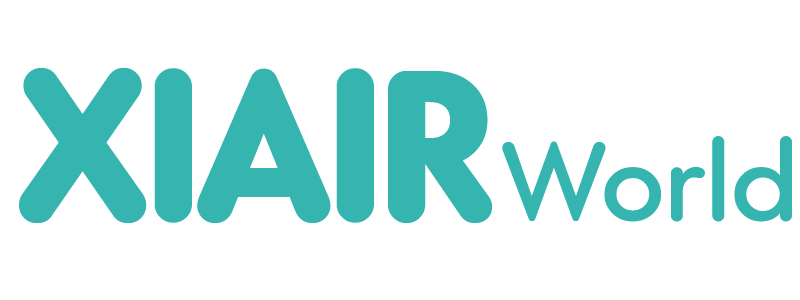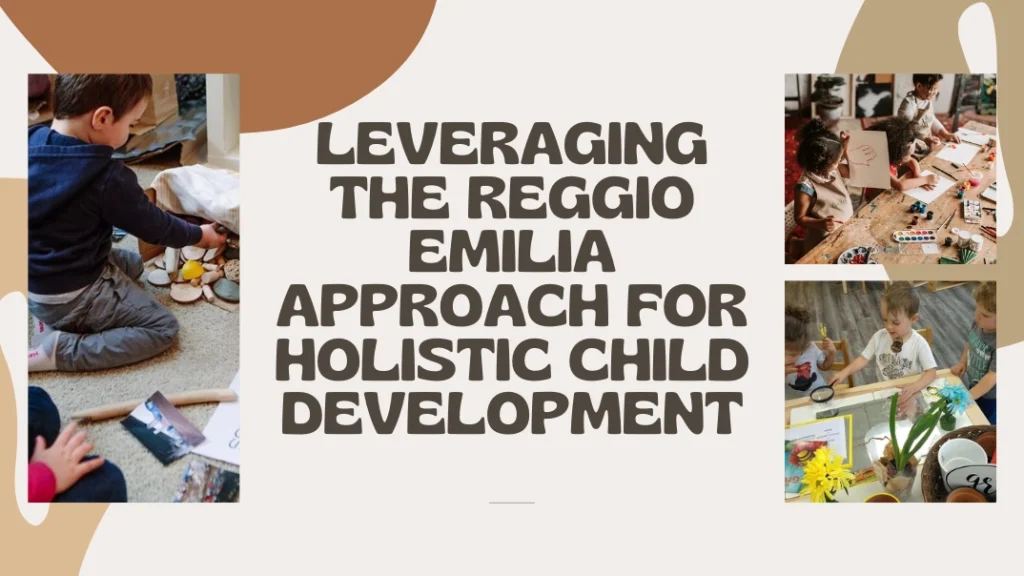As parents and educators, we constantly search for the best ways to nurture a child’s curiosity and support their natural growth. One method that has gained global recognition for its innovative and child-centered philosophy is the Reggio Emilia Approach. But what makes it so effective? And how can this method shape how we approach early childhood education today?
The Reggio Emilia Approach is a revolutionary educational philosophy emphasizing the importance of child-led learning, collaborative projects, and the role of the environment as a critical element in fostering discovery. Originating from Reggio Emilia in Italy, it views children as powerful learners, capable of constructing their knowledge through exploration, inquiry, and collaboration.
This method treats children as active participants in their education, creating an engaging and enriching learning environment. The Reggio Emilia Approach offers a fresh perspective on meaningfully supporting early childhood development by focusing on creativity, critical thinking, and social collaboration. The success of the Reggio Emilia Approach is particularly evident in its application within preschools, where young children thrive in an environment designed to encourage their natural creativity and curiosity.

What is the Reggio Emilia Approach?
The Reggio Emilia Approach, founded by Loris Malaguzzi after World War II, originated in Reggio Emilia, Italy. It was developed to respond to the need for a more progressive, child-centered educational system that nurtured creativity and social responsibility. This pedagogical approach believes in every child’s potential and ability to direct their learning. It is often called a constructivist approach because it encourages children to construct knowledge through hands-on experiences and social collaboration.
In a Reggio Emilia classroom, the curriculum, known as the emergent curriculum, is flexible and guided by the children’s interests. Rather than following a rigid structure, the teacher observes and facilitates, encouraging exploration and creativity. This child-led learning approach is highly interactive, incorporating the environment as a “third teacher” to provoke thought, creativity, and interaction. The Reggio Emilia Approach to early childhood education is highly regarded for its ability to foster collaboration and independent thinking.
Parents play a critical role, as parental involvement in the Reggio Emilia Approach is vital to this educational method’s success. Schools implementing the Reggio Emilia Approach often invite parents to participate in classroom activities and decision-making processes, strengthening the parent-teacher partnership.
One of the most distinctive aspects of the Reggio Emilia Approach is its emphasis on the hundred languages of children, which means children express their thoughts and ideas in many different ways—through art, music, storytelling, movement, and more. This idea forms the foundation of the Reggio Emilia Approach curriculum, which encourages symbolic representation and creative expression. The atelier, a dedicated art space, is central to fostering these “languages” of children, helping them communicate their ideas through various artistic forms.
Reggio Emilia Approach schools are renowned for their child-centered focus, promoting a unique philosophy that enables children to explore their interests and express their thoughts through project-based learning. The educational model is often implemented in Reggio Emilia preschools, where its success is evident in fostering deep engagement and a love of learning.
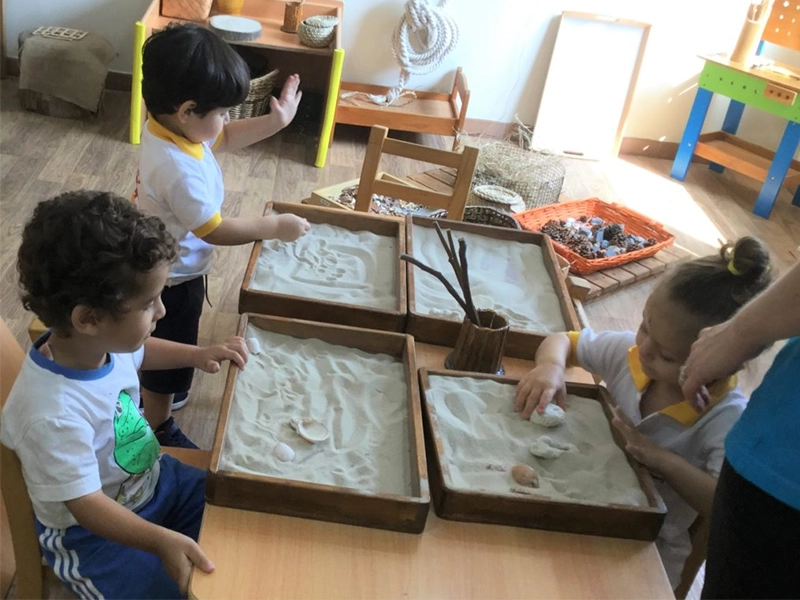


Understand the Basic Philosophies of Reggio Emilia in Children
The Reggio Emilia Approach is built upon several foundational philosophies that shape its entire educational framework. These ideas reflect a deep respect for children’s capacity to learn and express themselves in various ways. The philosophy of Reggio Emilia Approach ensures that children remain at the center of their learning process. The principles of Reggio Emilia Approach align with modern constructivist theories that view children as active agents in their learning environments.
The Image of the Child
Central to the Reggio Emilia philosophy is the belief that children are strong, capable, and resilient. This philosophy challenges traditional notions of the child as passive and views them as powerful learners who can construct their knowledge. This is one of the critical principles of the Reggio Emilia Approach, guiding teachers to act as facilitators and helping children build upon their innate curiosity and potential.
Symbolic Representation
The Reggio Emilia Approach emphasizes symbolic representation through what is known as the hundred languages of children. This term refers to how children express their understanding and communicate their ideas—through drawing, painting, music, dramatic play, or other forms of expression. These representations allow children to explore complex concepts and emotions in various ways, fostering creativity and problem-solving skills. Art in the Reggio Emilia Approach is not merely a creative outlet but a vital way for children to express their thoughts and feelings.
Education Based on Interaction and Collaboration
In the Reggio Emilia Approach, learning is inherently social. Children collaborate in small groups, learning from one another and developing essential social skills. This interaction extends to teachers and parents, as the Reggio Emilia Approach to early childhood education values a strong partnership between home and school, ensuring that learning is a community effort.
The Project Approach
The project approach is central to the Reggio Emilia classroom. Children engage in long-term, in-depth projects based on their interests, allowing them to explore subjects profoundly and from multiple angles. These projects encourage critical thinking, research, and creative problem-solving. Teachers guide the process but do not direct it, ensuring that learning remains child-led. This makes the Reggio Emilia project approach particularly effective in fostering deep, focused education.
The Importance of Time
A distinguishing feature of the Reggio Emilia Approach is its focus on giving children time. In a Reggio classroom, learning is not rushed; children are encouraged to revisit and reflect on their work, deepening their understanding. This Reggio Emilia Approach theory promotes a more meaningful, thorough exploration of topics, ensuring that children fully engage with the material. This time-intensive process is especially beneficial in Reggio Emilia Approach preschools, where young children’s developing minds thrive on reflection and deeper engagement.


The Reggio Emilia Approach is Founded On
Several essential foundations define and distinguish the Reggio Emilia Approach from other educational philosophies. These principles ensure that learning is dynamic, collaborative, and deeply reflective of the children’s interests.
1. Children as Protagonists
Children are seen as the main actors in their educational journey. They are viewed as competent, capable individuals capable of constructing their knowledge. The Reggio Emilia Approach to education empowers children to take ownership of their learning by engaging with exciting topics. This belief in the child’s competence is one of the most fundamental principles of the Reggio Emilia educational approach.
2. Collaboration at Every Level
Collaboration is a cornerstone of the Reggio Emilia Approach. Children, teachers, and parents work together to create a learning environment that is engaging and responsive to the child’s needs. This extends beyond the classroom, fostering a strong sense of community. The collaborative nature of the Reggio Emilia Approach to learning is one of its most distinctive features, setting it apart from more traditional methods.
Don’t just dream it, design it! Let’s chat about your custom furniture needs!
3. Teachers as Researchers
In the Reggio Emilia Approach, teachers are seen as co-learners who work with children. Their role is to observe, document, and support the children’s learning by providing resources and opportunities for exploration. This role reflects the belief that teaching is a reflective practice. The teacher’s role in the Reggio Emilia Approach is critical, as they act more as facilitators and observers than traditional instructors.
4. The Environment as the Third Teacher
The classroom environment in the Reggio Emilia Approach is often referred to as the “third teacher.” Classrooms are designed to inspire exploration, curiosity, and interaction. Materials are carefully chosen and placed to encourage discovery, emphasizing natural light, open spaces, and easy access to learning resources. The Reggio Emilia Approach to classroom design is critical in fostering an engaging learning atmosphere.
5. Documentation as a Reflective Tool
Documentation is an integral part of the Reggio Emilia Approach. Teachers document children’s work through photos, videos, and notes, which serve as a reflective tool for both the child and the educator. This process helps children revisit their learning, think critically about their experiences, and see their progress. Documentation also allows parents to engage with their child’s learning journey. The process of documentation in the Reggio Emilia Approach is a critical practice that supports reflective learning.

Why Reggio Emilia Works
The Reggio Emilia Approach has been successfully implemented in schools worldwide because it taps into children’s natural curiosity and creativity. Here’s why it works:
1. Child-Centered Learning
The Reggio Emilia Approach places the child at the center of the learning process. Children are empowered to explore topics that interest them, making learning more meaningful and engaging. This child-centered philosophy fosters a love of learning that extends beyond the classroom. Many educational models, such as the Reggio Emilia Approach to early education, benefit from this flexibility, allowing children to guide their learning.
2. Deep, Focused Learning
The project-based learning approach allows children to explore topics in depth. Children develop critical thinking and problem-solving skills beyond rote memorization by working on projects over extended periods. The Reggio Emilia project approach promotes sustained engagement, helping children develop a thorough understanding of complex topics.
3. Social and Emotional Development
Through collaboration, children learn essential social and emotional skills such as communication, empathy, and teamwork. The Reggio Emilia Approach encourages children to work together, share ideas, and learn from each other, fostering solid social connections.
4. Creativity and Expression
The focus on the hundred languages of expression allows children to communicate their thoughts and ideas in various ways, fostering creativity. This approach is compelling in nurturing artistic abilities, making the Reggio Emilia art approach a key component of its success.
5. Lifelong Learning
The Reggio Emilia Approach promotes critical thinking, curiosity, and a desire to explore—qualities that are essential for lifelong learning. Children who experience this method often carry a passion for learning into adulthood.
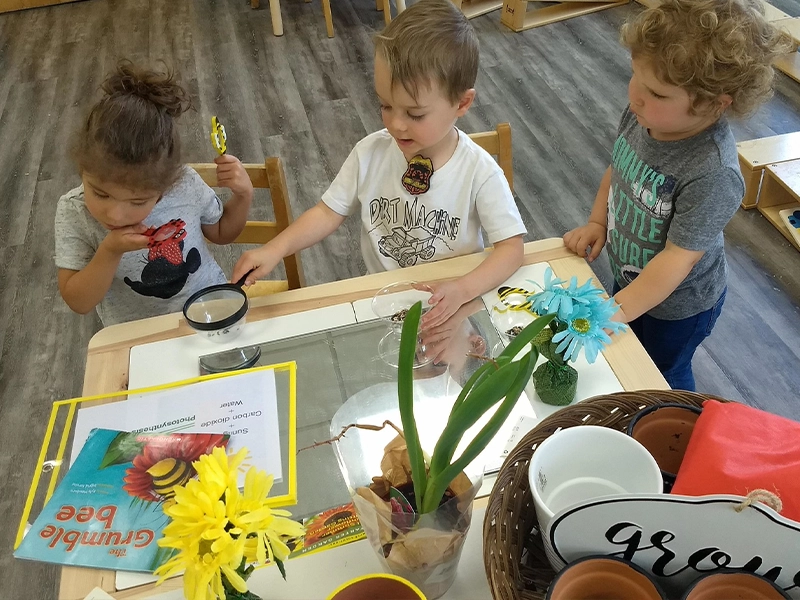


Reggio Emilia Curriculum
The Reggio Emilia curriculum is based on the emergent curriculum, meaning it is not pre-planned but develops organically based on the children’s interests. This flexible, child-led approach ensures that learning is always relevant and engaging.
Emergent Curriculum
The curriculum emerges from the children’s inquiries in the Reggio Emilia Approach. Teachers observe the children and design projects that build on their natural curiosity, creating a dynamic, evolving curriculum shaped by their interests.
Project-Based Learning
One of the defining features of the Reggio Emilia curriculum is the focus on project-based learning. Children engage in long-term projects that allow them to explore subjects deeply. These interdisciplinary projects often integrate art, science, math, and literacy.
The Atelier
The atelier, or art studio, is a vital component of the Reggio Emilia Approach curriculum. It allows children to explore their creativity through various mediums, including painting, sculpture, and drawing. Led by an atelierista, the atelier encourages children to represent their ideas visually.
Role of Teachers
Teachers in the Reggio Emilia Approach are facilitators rather than instructors. They observe the children’s work and provide resources, guiding them through inquiry-based learning. The teacher’s role in the Reggio Emilia Approach is to create opportunities for exploration, helping children connect their ideas across different subjects.
Nature and Outdoor Learning
The Reggio Emilia Approach to outdoor learning integrates nature into the educational process. Outdoor spaces are considered a classroom extension, allowing children to explore the natural world and engage in physical activities. Play-based learning in the outdoors supports the child’s physical, social, and cognitive development.
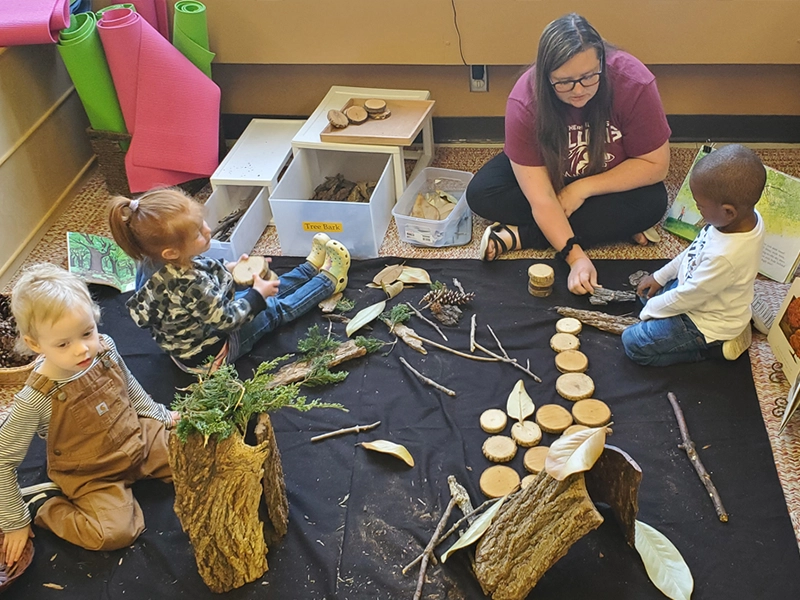
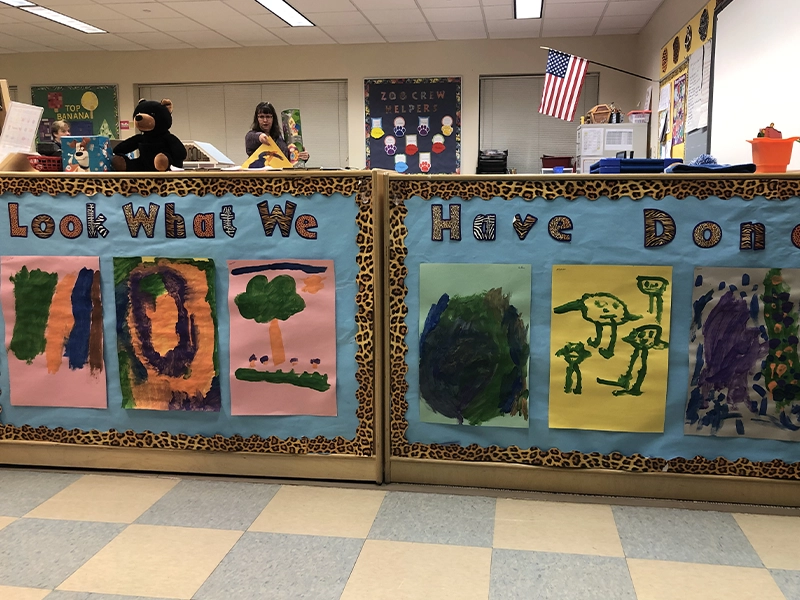
Reggio Emilia Classroom
The Reggio Emilia classroom is a carefully designed environment that encourages exploration, creativity, and collaboration. Every element of the school is chosen to foster curiosity and learning. The classroom environment in the Reggio Emilia Approach is critical in facilitating child-led inquiry and creativity.
The Atelier
The atelier is a dedicated space for creative exploration, filled with materials like paint, clay, and natural resources. This space is integral to the Reggio Emilia Approach and is used by children to express their ideas and emotions through art. The atelierista guides children using different mediums to represent their thoughts and feelings.
Mini-Ateliers
In addition to the main atelier, Reggio classrooms often feature mini-ateliers—smaller creative spaces within the school where children can engage in artistic activities throughout the day. These mini-ateliers provide ongoing opportunities for creative expression, an essential component of the Reggio Emilia art approach.
Don’t just dream it, design it! Let’s chat about your custom furniture needs!
Group Area
The group area is where children gather to work on collaborative projects. This communal space is designed to encourage teamwork, discussion, and shared learning experiences, reinforcing the collaborative nature of the Reggio Emilia Approach.
Outdoor Area
The outdoor area in a Reggio Emilia classroom extends the indoor learning space. Outdoor activities, including play-based learning, are integrated into the curriculum, allowing children to explore nature and engage in physical development.
The Piazza
The piazza is a shared space for children, teachers, and parents to discuss ideas and celebrate learning. Modeled after the communal squares in Italian towns, the piazza reinforces the community-based learning central to the Reggio Emilia Approach.
Your perfect classroom is one click away!
Reggio Emilia Approach vs. Montessori vs. Waldorf
Regarding early childhood education, three popular approaches often come to mind: Reggio Emilia, Montessori, and Waldorf. While all three emphasize child-centered learning, they have different focuses, environments, and methods. Understanding the distinctions can help parents and educators decide which method is best suited for their needs.
Reggio Emilia
The Reggio Emilia Approach is known for its focus on child-led projects and the belief in the hundred languages of children—the many ways children express themselves. It encourages exploration, collaboration, and hands-on learning, with the teacher acting as a co-learner rather than an instructor. The environment is a crucial element designed to provoke curiosity and interaction.
- Key Characteristics: Emergent curriculum, project-based learning, collaboration, environment as the third teacher, strong parental involvement.
- Strength: Fosters creativity, collaboration, and critical thinking through long-term projects and flexible learning paths.
Montessori
The Montessori Method, developed by Maria Montessori, is based on fostering independence and learning through sensory experiences. Montessori classrooms are often highly structured, focusing on individual learning and hands-on activities that allow children to work independently.
- Key Characteristics: Prepared environment, self-directed learning, multi-age classrooms, specific Montessori materials, independence.
- Strength: Promotes independence and self-discipline through structured activities and materials tailored to individual learning needs.
Waldorf
The Waldorf Education system, founded by Rudolf Steiner, emphasizes imagination, creativity, and holistic development. Waldorf classrooms emphasize rhythm and routine, storytelling, and arts and crafts. Academic instruction is delayed until later in childhood, with a strong emphasis on creative play during the early years.
- Key Characteristics: Focus on imagination and creativity, delayed academic instruction, strong emphasis on arts and storytelling, connection to nature.
- Strength: Nurtures creativity and emotional development by emphasizing arts, play, and rhythm.
Comparison
| Approach | Focus | Teacher’s Role | Classroom Environment | Strengths |
|---|---|---|---|---|
| Reggio Emilia | Child-led, project-based, collaborative | Co-learner, facilitator | Flexible, collaborative, inspiring | Fosters creativity, critical thinking, and teamwork |
| Montessori | Independence, sensory learning, self-paced | Observer, guide | Highly structured, individual-focused | Encourages independence and self-discipline |
| Waldorf | Imagination, creativity, holistic development | Storyteller, nurturing guide | Rhythmic, arts-focused, natural | Nurtures creativity and emotional development |
While each method has strengths, the best approach depends on the child’s learning style, the parent’s goals, and available resources. All three methods share a deep respect for the child as a learner, though their philosophies diverge on how best to guide that learning.
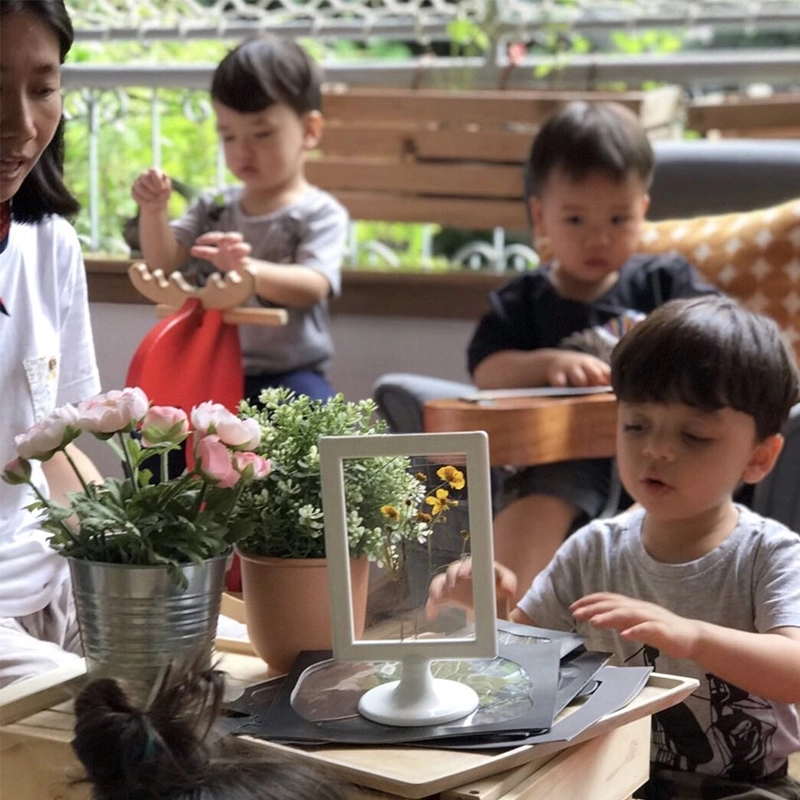
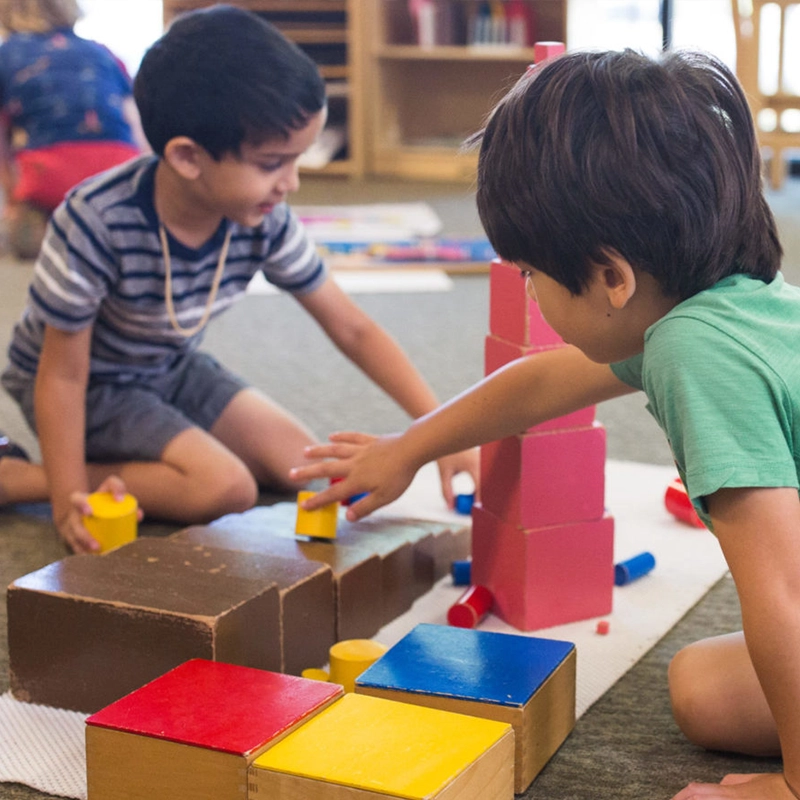

Finding the Right Language
One of the most powerful concepts in the Reggio Emilia Approach is the idea of the hundred languages of children. This refers to the many different ways that children can express themselves and make sense of the world. Whether through art, music, dance, storytelling, or play, children are encouraged to find the “right language” to communicate their ideas, thoughts, and feelings.
In the Reggio Emilia Approach, children are not confined to traditional methods of communication like speech or writing. Instead, they are encouraged to use various symbolic representations to express their understanding. For example, a child might explore a scientific concept by building a model, illustrating it through a painting, or acting it out in dramatic play. These diverse forms of expression allow children to process complex ideas in a way that makes sense.
The idea of finding the correct language goes beyond just communication. It’s about giving children the freedom to explore multiple avenues of learning and expression. By allowing children to engage with a topic through different “languages,” they can develop a deeper, more nuanced understanding of the subject matter. This approach also supports different learning styles, recognizing that each child may prefer a different way to express their ideas.
Additionally, this emphasis on symbolic representation encourages creativity and critical thinking. As children experiment with different mediums—drawing, sculpting, or storytelling—they learn to problem-solve, connect ideas, and effectively communicate their thoughts.
The “hundred languages” also help children to build emotional intelligence. Through play, art, and other forms of expression, children learn to explore and express their emotions in healthy and constructive ways. This emotional development is crucial for building resilience, empathy, and self-awareness. Many Reggio Emilia Approach schools worldwide have integrated these principles, showcasing this method’s global impact and flexibility.
Finding the correct language empowers children to be versatile thinkers and communicators. It allows them to tap into their natural creativity and curiosity, giving them the tools to navigate an increasingly complex world.

Conclusion
The Reggio Emilia Approach provides a holistic, child-centered model of early childhood education that fosters creativity, collaboration, and critical thinking. Focusing on an emergent curriculum, in-depth projects, and the hundred languages of children equips children with the tools they need to navigate a complex and changing world. The Reggio Emilia Approach to learning is flexible and adaptable, making it a powerful tool in formal education settings and even at home.
For parents and educators, implementing the Reggio Emilia Approach means creating an environment where children can explore, collaborate, and express meaningfully. By embracing this approach, we can help foster a generation of independent, creative, and confident learners.
